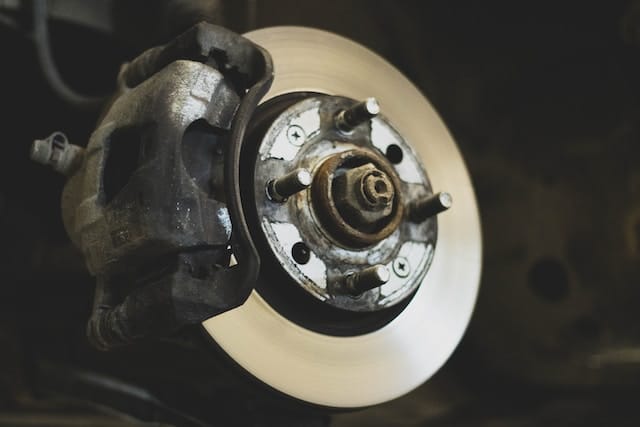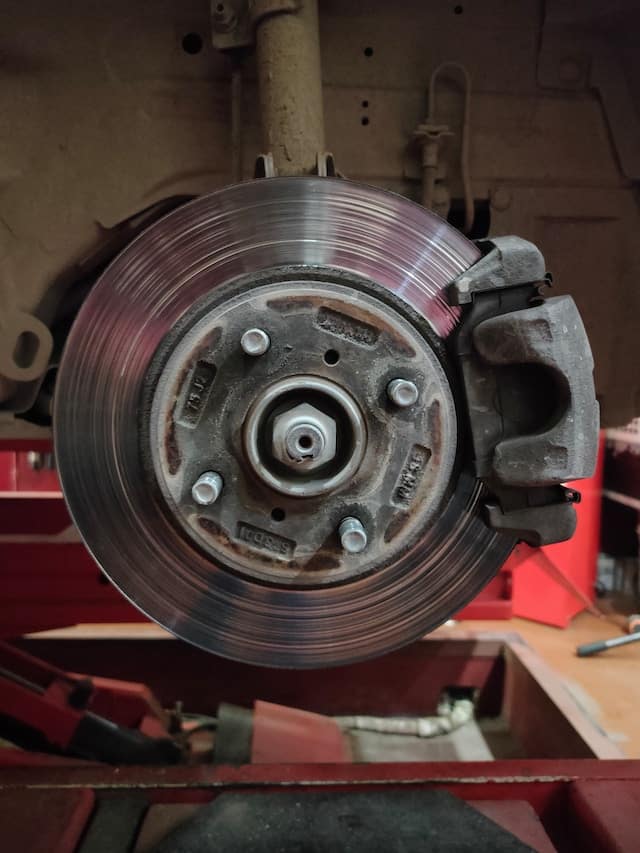
The brake pad spreader, a seemingly simple yet exceptionally essential tool, makes the often-daunting task of brake maintenance significantly easier. This article will not only introduce you to what a brake pad spreader is but also dive deep into its functions, benefits, and how to effectively use it during brake pad replacements.
The Essential Role of a Brake Pad Spreader
Every vehicle owner understands the importance of maintaining a healthy brake system. The brake pad spreader plays a crucial role in this maintenance routine. This tool, which is sometimes referred to as a brake piston compressor, is designed specifically to push back the piston within your vehicle’s brake caliper, creating necessary space for new, thicker brake pads.
The Benefits of Using a Brake Pad Spreader
Saves Time
The brake pad spreader can substantially speed up the process of changing brake pads by swiftly and smoothly retracting the piston.
Prevents Damage
By evenly distributing pressure, the spreader decreases the risk of caliper, piston, and seal damage that might occur if inappropriate tools are used.
Ease of Use
The tool is easy to operate, making brake pad replacement more manageable, even for those who are new to auto repairs.
Best Brake Pad Spreader Reviews & Recommendations
OTC Disc Brake Pad Spreader
[lasso id=”5504″ link_id=”2479″ ref=”amzn-otc-7034-disc-brake-pad-spreader” sitestripe=”true”]The OTC Disc Brake Pad Spreader is a tool designed to simplify your brake pad installation process. The OTC Disc Brake Pad Spreader combines efficiency, compatibility, and a user-friendly design to facilitate your brake pad installations. Trust in the OTC’s longstanding reputation for quality tools and make your brake pad maintenance process smoother and more efficient.Here are some of the key benefits that make it an essential addition to your toolset:
1. Facilitated Installation Process: The spreader fits conveniently between the new pads and expands to retract the piston. This function leaves your hands available to easily slide the caliper over the rotor.
2. Broad Compatibility: This versatile tool is designed to work efficiently on both standard and four-piston caliper disc brakes.
3. Trusted Quality: The Owatonna Tool Company (OTC) has a legacy of designing and manufacturing high-quality American specialty service tools, diagnostics, and shop equipment since 1925. You can trust in their longevity and dedication to quality.
Furthermore, based on decades of user experience, this tool is praised for its ease of use and compact design. To make the most of the OTC Disc Brake Pad Spreader, users recommend placing the new pads in the caliper first as this helps to push the pistons back far enough to fit over the rotor.
Lisle 29100 Quick Quad Pad Spreader
[lasso id=”5512″ link_id=”2480″ ref=”amzn-lisle-29100-quick-quad-pad-spreader” sitestripe=”true”]The Lisle 29100 Quick Quad Pad Spreader offers a swift and efficient solution for spreading brake pads and compressing disc brake pistons. This tool is designed to streamline the process of pad replacement on single, double, and quad piston calipers, significantly reducing maintenance time. Key features and advantages include:
- Broad Compatibility: This tool is versatile and can work effectively on single, double, and quad piston calipers. It can compress all four pistons simultaneously in quad piston applications, making it a multifaceted tool for diverse brake systems.
- Usability: The Lisle 29100 Quick Quad Pad Spreader can be operated while the caliper is either attached to the vehicle or hanging freely. This flexibility further simplifies the brake pad replacement process.
- Efficient Design: The spreader has plate dimensions of 220″ in thickness, 3 3/4″ in width, and a reach of 1 7/8″ from the top of the plate to the outrigger arm. Moreover, it can spread up to 2 1/2″, and its tool plates are non-rotating. These features contribute to its effectiveness and ease of use.
- Superior Performance: Many users prefer the Lisle 29100 Quick Quad Pad Spreader over ratchet types for retracting brake caliper pistons when replacing pads. The tool can function optimally with or without the rotor in place, and it accommodates 1-2 piston floating calipers and 2-6 piston fixed calipers.
JOJOY LUX Brake Caliper Press Tool
[lasso id=”5543″ link_id=”2481″ ref=”amzn-jojoy-lux-brake-caliper-press-tool-360-degree-swing-ratchet-expander-wrench-car-wheel-piston-spreader-with-extra-2pcs-large-plates-for-single-twin-quad-sextuplet-piston-disc-brake-caliper” sitestripe=”true”]The JOJOY LUX Brake Caliper Press Tool, purposefully designed for disc brake applications, offers a simple, efficient, and professional solution for brake maintenance. This labor-saving tool, equipped with two sets of push boards—measuring 7.01×2.36″ and 4.53×2.17″—cater to different caliper types and sizes. Whether it’s twin and quad pistons fixed calipers, single and twin pistons floating calipers, or sextuplet pistons fixed calipers, this tool offers a tailored fit.
A standout feature of the JOJOY LUX tool is its 360-degree ratchet design. This allows easy positioning and operation from any angle, significantly reducing hand fatigue during use. Plus, with the ratchet centrally placed, the dual piston brake caliper compressor ensures an even force distribution across the caliper piston, preventing potential damage or dislocation.
Constructed with robust 1/8″ thick steel spreading plates, the JOJOY LUX tool promises durability and resistance to deformation. The handle features a comfortable, skid-resistant red cushion, ensuring safe and comfortable usage. The larger spreading plates are equipped with small built-in magnets and cylindrical pins for swift and effortless assembly and disassembly.
Spurtar Brake Caliper Press Tool
[lasso id=”5491″ link_id=”2482″ ref=”amzn-spurtar-brake-caliper-press-tool-brake-caliper-tool-spreader-4-in-1-universal-disc-brake-caliper-compression-tool-ratchet-piston-spreader-automotive-tools-for-car-brake-repair-installation-blue” sitestripe=”true”]The Spurtar Brake Caliper Press Tool stands as an ideal equipment for brake pump adjustment, encompassing versatility and convenience with its 4-in-1 multifunctional design. This tool is well-suited to work on single, dual, and quad pistons, as well as single and twin piston floating calipers.
Featuring a centrally located ratchet screw, the tool ensures even compression force on pistons. This unique design not only facilitates proper alignment but also prevents any potential damage to your brake components. The ratchet technology integrated into this Brake Caliper Tool allows a 360-degree swing, holding the compression plates in place while you lever the handle back and forth to spread or retract the plates.
Comparing Brake Pad Spreaders: An Analysis of Ratchet, Spring, C-Clamp, and Lever-Type Tools

There are several types of brake pad spreaders available, each with its unique design and function. They primarily include:
Ratchet Type Brake Pad Spreader
This type uses a ratchet mechanism to evenly push back the caliper piston, allowing for a new brake pad installation. They are simple to use and provide an even and smooth spreading action.
Spring Type Brake Pad Spreader
The spring type spreader works on the principle of spring tension. It’s usually equipped with a spring-loaded mechanism that exerts pressure on the caliper piston to create space for new brake pads. They are generally compact, making them easier to use in tighter spaces.
C-Clamp
While not specifically a brake pad spreader, a C-Clamp is a commonly used tool in brake service for compressing the caliper piston. It’s a versatile tool and can be used for various purposes, but it requires more care to avoid uneven pressure that might damage the caliper piston.
Lever-Type Brake Pad Spreader
Some spreaders use a lever action to push the piston back. These are typically simple to use and can apply significant force.
Each type has its pros and cons, and the choice often depends on the specific needs of the job, the type of vehicle, and personal preference of the mechanic. Always remember that whichever tool is used, it’s crucial to apply even pressure to avoid damaging the caliper or piston.
Brake Pad Spreader: Ratchet vs. Spring Type
When replacing your brake pads, one of the most essential tools you’ll need is a brake pad spreader. This tool is designed to push the brake caliper piston back into its bore to allow for new, thicker brake pads. The two most common types are the ratchet style and the spring type, each with its own set of advantages and drawbacks.
Ratchet Style Brake Pad Spreader
A ratchet-style brake pad spreader uses a mechanism similar to a socket wrench. The ratchet system allows the tool to only move in one direction, enabling the user to apply consistent force to the brake caliper piston.
Advantages of the ratchet style
- Precision: The ratchet mechanism allows for more controlled and accurate pressure application. This is particularly useful when dealing with more complex brake systems, like those with multi-piston calipers.
- Stability: Once set, the ratchet holds its position, ensuring the piston doesn’t retract during the pad installation process.
Drawbacks of the ratchet style
- Complexity: Ratchet-style spreaders are more complex and may require some mechanical understanding to use effectively.
Spring Type Brake Pad Spreader
Spring type brake pad spreaders operate using a simple spring mechanism. The user squeezes the handles together, and the tool spreads the brake pads apart, pushing back the piston in the process.
Advantages of the spring type
- Simplicity: Spring type spreaders are simple to use, making them ideal for individuals with less mechanical experience.
- Compactness: These spreaders are typically smaller and more portable than their ratchet counterparts.
Drawbacks of the spring type
- Less Control: The spring type provides less control over the amount of force applied, which could lead to issues if not handled carefully.
In conclusion, the choice between a ratchet and spring type brake pad spreader largely depends on your personal preference, experience level, and the specific requirements of the brake system you are working on. Both can get the job done, but each offers a different user experience.
How to Use a Brake Pad Spreader

A brake pad spreader is an essential tool for anyone looking to perform DIY brake maintenance or professional repair. It’s designed to retract the brake caliper piston, creating enough space for new brake pads. Here’s a step-by-step guide on how to use it effectively:
- Safety First: Ensure the vehicle is securely lifted and supported with jack stands. The wheels should be removed to access the brake caliper.
- Caliper Inspection: Before using the spreader, inspect the caliper for any signs of damage or wear that could affect its function.
- Positioning the Tool: With the brake caliper removed from the rotor, insert the brake pad spreader between the old brake pad and the caliper piston. The spreader should be squarely against the piston face without tilting.
- Applying Pressure: Gently turn the handle of the spreader to start applying outward pressure. The piston will begin to retract back into the caliper housing. It’s important to proceed slowly to prevent damage to the piston or caliper.
- Monitoring Progress: Keep an eye on the piston as it retracts to ensure it’s moving evenly and the spreader remains properly aligned.
- Full Retraction: Continue to turn the spreader until the piston is fully retracted and there’s sufficient space for the new brake pads.
- Brake Pad Replacement: Once the piston is retracted, you can remove the old brake pad and replace it with a new one. Ensure the new pads are correctly aligned and fitted.
- Final Checks: After the new pads are in place, you can remove the spreader. Before reattaching the caliper, check that everything is seated properly and there are no obstructions.
There are various types of brake pad spreaders available on the market, ranging from simple manual devices to more complex tools with advanced features. While the manual types are generally less expensive and can be perfectly sufficient for occasional use, more frequent users or professional mechanics might opt for versions that provide additional speed and ease of use.
Estimating the Time Required for Brake Pad Replacement Using a Brake Pad Spreader
The time it takes to perform brake maintenance using a brake pad spreader can vary depending on several factors, such as:
- Experience: An experienced mechanic or an individual familiar with brake systems may complete the task more quickly than a novice.
- Vehicle Type: Some vehicles have more complex brake systems that require additional steps or special care.
- Tools and Preparation: Having all the necessary tools and parts prepared beforehand can significantly reduce the time needed.
- Condition of Components: If there are corroded parts or additional issues discovered during the maintenance, this can add time to the job.
- Number of Wheels: The time will increase if you are servicing all four wheels versus just the front or rear.
Typically, for an individual with some experience, changing the brake pads on one wheel might take about 30 minutes to an hour. This includes the time to lift the vehicle, remove the wheel, replace the pads, compress the caliper piston with the spreader, and then reassemble everything. Therefore, for all four wheels, you might expect the job to take around 2 to 4 hours.
For a professional mechanic, the time may be less due to their expertise and efficiency. It’s important to note that one should never rush brake maintenance as it is crucial to ensure the job is done safely and correctly. If you’re inexperienced or encounter any problems, it’s better to take your time or seek professional assistance.
Brake Pad Spreader: FAQs
Q: What is a brake pad spreader?
A: A brake pad spreader is a specialized tool used during brake maintenance or replacement to push the brake caliper piston back, allowing for the installation of new brake pads.
Q: Are there different types of brake pad spreaders?
A: Yes, brake pad spreaders come in various types such as ratchet, spring, and screw-type spreaders. Each type has its own advantages, but all serve the same primary function – to retract the brake caliper piston.
Q: How does a ratchet type brake pad spreader work?
A: A ratchet type brake pad spreader utilizes a mechanism that allows you to apply pressure incrementally. This mechanism permits the spreader to maintain the pressure on the caliper, freeing your hands to perform other tasks.
Q: What is a C-clamp method in brake maintenance?
A: The C-clamp method involves using a standard C-clamp to retract the brake caliper piston. This is a more traditional method but is not as efficient or safe as using a dedicated brake pad spreader.
Q: Can I use a brake pad spreader for both disc and drum brakes?
A: A brake pad spreader is specifically designed for disc brake systems. It is not suited for drum brakes, which have a different mechanism and require different tools for maintenance and repair.
Q: Is a brake pad spreader necessary for brake pad replacement?
A: While it’s possible to retract the brake caliper piston using other methods, a brake pad spreader is the recommended tool. It provides a safer, more controlled, and efficient way to push back the piston, minimizing the risk of damage to the caliper.
Q: How often should I use a brake pad spreader?
A7: The use of a brake pad spreader coincides with the frequency of brake pad replacement, which depends on various factors such as driving habits, vehicle type, and the quality of the brake pads. Typically, brake pads need replacing every 50,000 miles, but this can vary widely.
Q: Can I use the same brake pad spreader for different types of vehicles?
A: Most brake pad spreaders are designed to be versatile and can work with a variety of vehicles, from small cars to large trucks. However, it’s always best to check the specifications of the tool to ensure compatibility with your vehicle’s braking system.
Q: Are brake pad spreaders expensive to purchase?
A: The cost of brake pad spreaders can vary depending on the type and brand. However, they are generally affordable, especially when considering the convenience and safety they provide during brake maintenance.
Q: Can I use a brake pad spreader by myself, or do I need a professional’s help?
A: While a brake pad spreader is relatively straightforward to use, working with a vehicle’s braking system can be complex and risky if not handled correctly. If you’re unfamiliar with the process, it may be best to seek help from a professional mechanic.
Q: Are there any safety precautions I should take when using a brake pad spreader?
A: Yes, always ensure the vehicle is securely jacked up and the wheels are properly blocked. Wear protective gloves and eyewear, and make sure to follow the instructions provided by the tool’s manufacturer. If you’re unsure or uncomfortable performing the task, consider seeking professional assistance.


